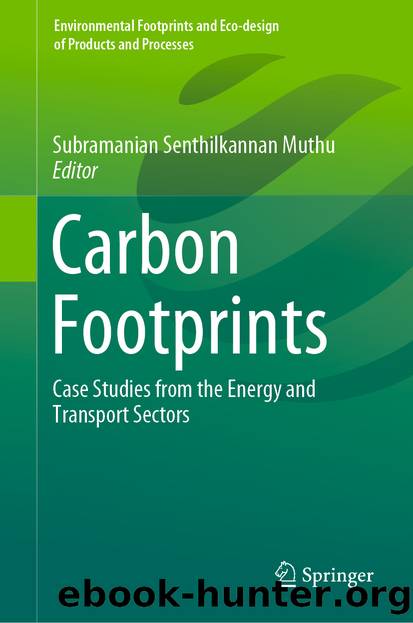Carbon Footprints by Unknown

Author:Unknown
Language: eng
Format: epub
ISBN: 9789811379123
Publisher: Springer Singapore
2 Global Electricity Trends
The role of electricity in the development of the global economy is very crucial as its benefits are enormous and diverse. Electricity has great potentials in bringing about improvements in the living standards of people through increased productivity, improved levels of health care, improvement in education services and improvement in communication networks. Access to energy is an important need for human development, economic development and alleviation of poverty (Akinbulire et al. 2014). The quest for global access to electricity is an ongoing challenge affecting global development. The methods of electricity generation also have important impacts on the environment. The fossil-fired power plants (gas, coal and oil) have historically dominated the global energy mix. These methods of electricity generation have brought about increases in the emission of CO2 and other GHGs which are fundamentally responsible for the recent global climate change (Babatunde et al. 2018a). A concerted transition in electricity sources is needed for global climate targets so as to avoid the negative impacts of climate change (Babatunde et al. 2018b).
There was approximately 3.1% (780 TWh) growth in electricity demand globally in 2017, while the global energy demand only increased by 2.1% in the same period. There was a strong correlation between the economic output of two emerging economies (China and India) and their electricity demand growth. With an economic growth of approximately 7%, China accounted for 48% of the electricity growth globally, while India with an economic growth of a little over 7% accounted for 180 TWh (approximately 23%) (International Energy Agency 2018a).
In total, China and India accounted for nearly 70% electricity demand globally in 2017, while 10% growth is attributed to other developing countries in Asia. Significant steps have been taken to improve access to electricity in many communities in India. The government has been able to extend access to electricity to about five hundred million individuals since the year 2000, thereby almost doubling the rate of access from 43% in the year 2000 to 82% of the present population (International Energy Agency 2018a). The developed countries were responsible for approximately 10% of the global electricity demand growth. The USA reduced its average electricity demand by 80 TWh in 2017. Furthermore, the European Union grew its electricity demand by 75 TWh in the same year. This is equivalent to the predicted economic growth of 2.3% in the same year. The demand for electricity in Japan also increased by about 15 TWh (International Energy Agency 2018a).
The global power plant mix (in terms of ratio) has remained relatively unchanged over the last century. The four key traditional electricity sources that have dominated electricity generation over the last 40 years include natural gas, large hydro, coal and nuclear. In 2017, renewable energy sources were responsible for approximately 50% of the cumulative global additional generation required to satisfy the rising electricity demand. With this addition, the renewable energy fraction in the global electricity mix rose to 25%—a record high. Figure 1 shows the global electricity mix for 2017. Coal accounted for 37%, renewables 25%, gas 23%, nuclear 10% and oil 4% (International Energy Agency 2018a).
Download
This site does not store any files on its server. We only index and link to content provided by other sites. Please contact the content providers to delete copyright contents if any and email us, we'll remove relevant links or contents immediately.
Kathy Andrews Collection by Kathy Andrews(11716)
The remains of the day by Kazuo Ishiguro(8802)
Paper Towns by Green John(5076)
Spare by Prince Harry The Duke of Sussex(5062)
The Body: A Guide for Occupants by Bill Bryson(4963)
Industrial Automation from Scratch: A hands-on guide to using sensors, actuators, PLCs, HMIs, and SCADA to automate industrial processes by Olushola Akande(4941)
Machine Learning at Scale with H2O by Gregory Keys | David Whiting(4135)
Be in a Treehouse by Pete Nelson(3932)
Never by Ken Follett(3773)
Harry Potter and the Goblet Of Fire by J.K. Rowling(3764)
Goodbye Paradise(3720)
Into Thin Air by Jon Krakauer(3298)
The Remains of the Day by Kazuo Ishiguro(3286)
The Cellar by Natasha Preston(3253)
The Genius of Japanese Carpentry by Azby Brown(3216)
Fairy Tale by Stephen King(3207)
120 Days of Sodom by Marquis de Sade(3168)
Drawing Shortcuts: Developing Quick Drawing Skills Using Today's Technology by Leggitt Jim(2989)
The Man Who Died Twice by Richard Osman(2987)
